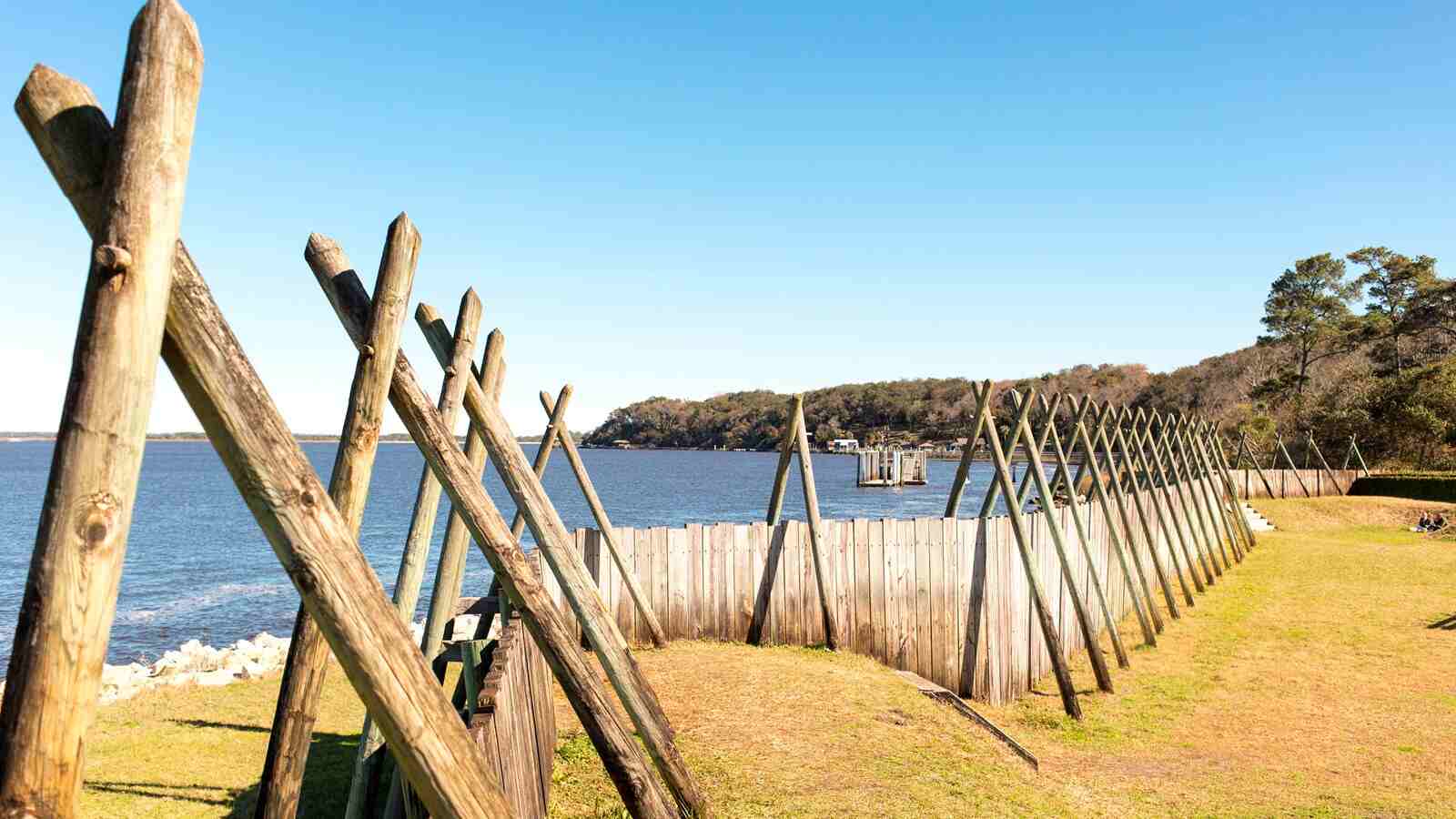- Home
- Florida History
- Florida Heritage Sites
- Fort Caroline National Memorial
FORT CAROLINE NATIONAL MEMORIAL
By Mike Miller July 6, 2025
OVERVIEW
Fort Caroline National Memorial is in Jacksonville, Florida. It honors a 16th-century French settlement attempt. The park sits on the St. Johns River.
A replica fort shows how settlers lived. Visitors explore trails, exhibits, and a visitor center.
The site is part of the Timucuan Ecological and Historic Preserve. It offers history and nature for all ages.
 Fort Model Wall Along the St. Johns River
Fort Model Wall Along the St. Johns Riverat Fort Caroline National Memorial
HISTORICAL SIGNIFICANCE
In 1564, French Huguenots led by René de Laudonnière built Fort Caroline. They sought religious freedom and a new colony.
The settlement was France’s first North American colony. Spain saw it as a threat. In 1565, Spanish forces under Pedro Menéndez attacked and destroyed the fort.
Most settlers were killed. The Spanish built their own fort, San Mateo, on the site. The exact location of the original fort is unknown.
The memorial, established in 1950, preserves this history. It joined the National Park Service in 1953.
VISITING DETAILS
The memorial is at 12713 Fort Caroline Road, Jacksonville, Florida 32225. From I-95, take Exit 362A to SR 9A south, then follow signs to Fort Caroline Road.
It’s open daily from 9 AM to 5 PM, except Thanksgiving, Christmas, and New Year’s Day. Admission is free. The visitor center has exhibits and a film.
Call 904-641-7155 for group visits or ranger-led tours. Trails are short but can be muddy, so wear sturdy shoes.
Bring water and bug spray. Pets must be leashed. The fort replica is a short walk from the parking lot.
INTERESTING FACTS
- The replica fort is one-third the size of the original, based on historical sketches.
- The Timucua people, native to the area, traded with the French settlers.
- A 1564 map by Jacques le Moyne is the first European depiction of Native Americans.
- The fort’s triangular design was typical of 16th-century European defenses.
- The French named the St. Johns River Rivière de Mai (River of May). Spanish forces renamed the river “San Juan” after destroying the fort.
- The visitor center displays artifacts like French pottery and Timucua tools.
- The park protects 600 species of plants and animals, including manatees.
- Hurricanes in 1565 delayed French reinforcements, leading to the fort’s fall.
FORT CAROLINE NATIONAL MEMORIAL WEBSITE
LOCATION MAP

Florida is the fastest-growing state in the United States and also the fastest-changing. If you see anything in this article that has changed or is in error, please let me know.
Thousands of Florida fans subscribe to our free daily Ezine, Florida Heritage Travel and we have 130,000 followers on Facebook.
By Mike Miller, Copyright 2009-2026
Florida-Back-Roads-Travel.com
Florida Back Roads Travel is not affiliated with or endorsed by Backroads, a California-based tour operator which arranges and conducts travel programs throughout the world.
